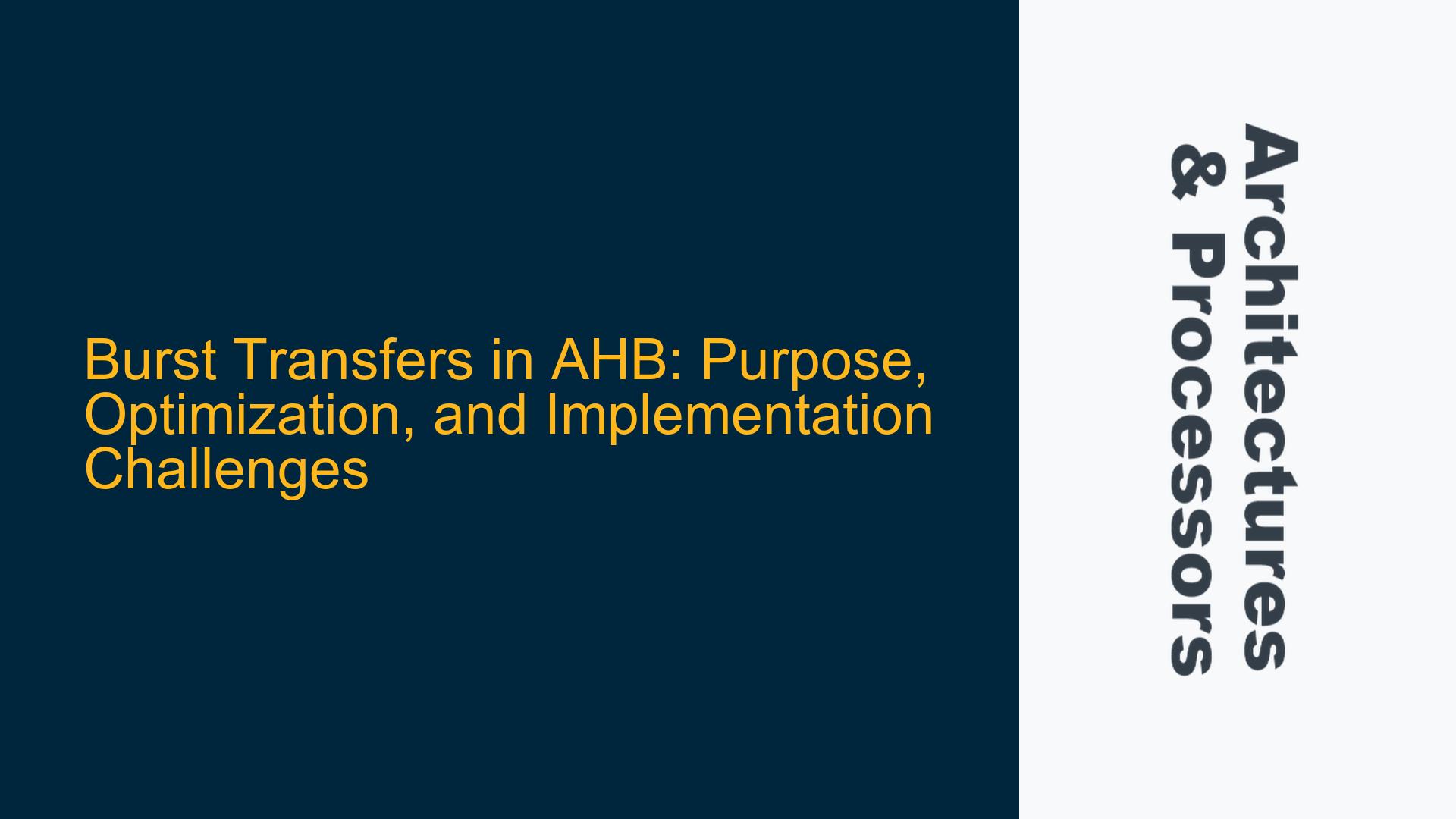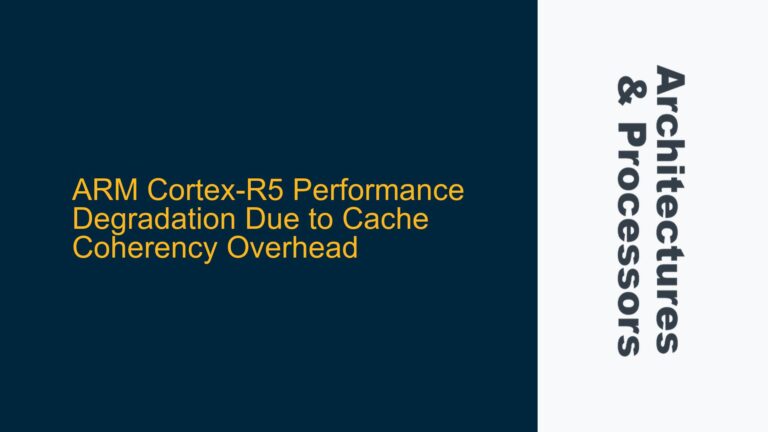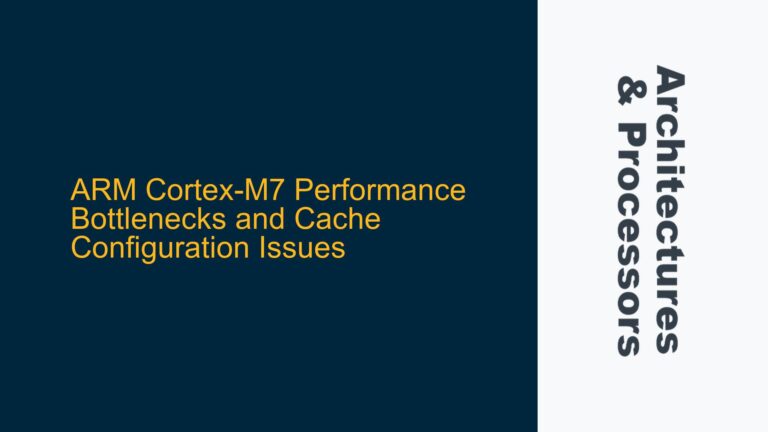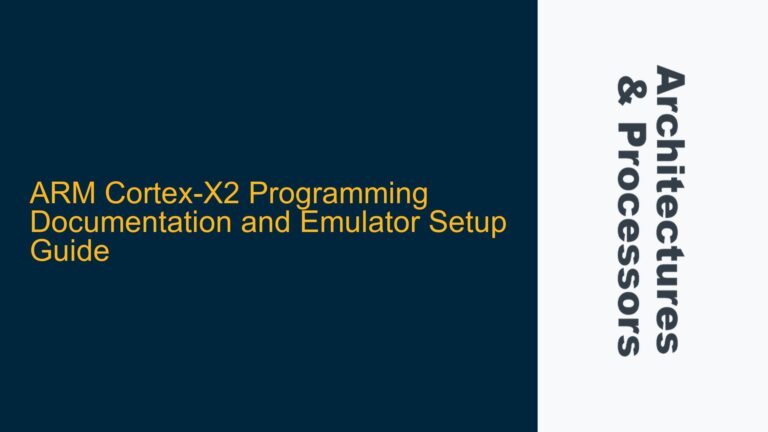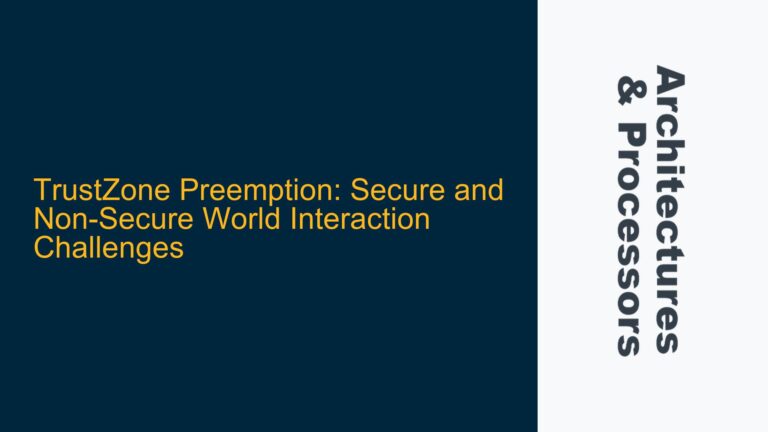Understanding the Role of Burst Transfers in AHB Protocol
The Advanced High-performance Bus (AHB) protocol, part of the ARM AMBA (Advanced Microcontroller Bus Architecture) family, is widely used in System-on-Chip (SoC) designs for high-performance data transfers between masters and slaves. One of the key features of AHB is its support for burst transfers, which allows a master to perform multiple data transfers in a single transaction. Burst transfers are defined by the HBURST signal, which specifies the type and length of the burst (e.g., INCR4, INCR8, WRAP4, etc.). At first glance, it may seem that burst transfers could be replaced by multiple single transfers without any loss of functionality or performance. However, this perspective overlooks the deeper architectural and operational advantages that burst transfers provide.
Burst transfers are not merely a convenience feature; they are a critical optimization mechanism for improving the efficiency of data movement within an SoC. By allowing a master to specify a sequence of transfers in advance, the AHB protocol reduces the overhead associated with address and control signal handshaking, optimizes the use of the bus bandwidth, and enables slaves to prepare for sequential accesses more effectively. For example, in a system with a DRAM controller, burst transfers allow the controller to prefetch data and minimize the latency of subsequent accesses, which is particularly beneficial for memory-intensive applications such as video processing or machine learning.
The HBURST signal is used by the arbiter to make informed decisions about bus ownership. When a master initiates a burst transfer, the arbiter can prioritize granting the bus to that master until the burst is complete, reducing the likelihood of unnecessary bus contention and improving overall system throughput. Additionally, slaves that are aware of the burst length can optimize their internal operations, such as prefetching data or configuring internal buffers, to handle the incoming data more efficiently.
Potential Misconceptions and Architectural Bottlenecks
One common misconception is that burst transfers do not offer any performance advantage over single transfers because both approaches require the same number of clock cycles to complete the data transfer. While it is true that the total number of clock cycles may be similar, this view ignores the overhead associated with address and control signaling. In a single transfer scenario, each transfer requires a separate address phase and control handshaking, which consumes additional clock cycles and bus bandwidth. In contrast, burst transfers consolidate the address and control information into a single phase, reducing the overhead and allowing the bus to operate more efficiently.
Another potential bottleneck arises when the burst transfer length is not aligned with the underlying memory architecture. For example, if a master initiates a burst transfer of 16 words (INCR16) but the memory subsystem is optimized for 8-word bursts, the memory controller may need to split the transfer into two separate operations, negating some of the benefits of burst transfers. This misalignment can lead to suboptimal performance and increased latency, particularly in systems with complex memory hierarchies or multiple masters competing for bus access.
Furthermore, the use of burst transfers requires careful consideration of the system’s arbitration policy. If the arbiter does not prioritize burst transfers appropriately, it may grant the bus to another master in the middle of a burst, forcing the original master to rearbitrate for the bus and potentially causing delays. This issue is particularly relevant in systems with high bus contention, where multiple masters are frequently requesting access to the bus.
Optimizing Burst Transfers for Performance and Efficiency
To fully leverage the benefits of burst transfers in AHB, designers must address several key implementation and verification challenges. First, the system’s arbitration policy should be designed to prioritize burst transfers, allowing masters to complete their burst sequences without interruption. This can be achieved by configuring the arbiter to grant the bus to a master for the duration of its burst transfer, unless a higher-priority request is received. Additionally, the arbiter should be capable of handling burst transfers of varying lengths, ensuring that the bus is utilized efficiently regardless of the burst type.
Second, the memory subsystem should be optimized to support burst transfers effectively. This includes configuring the memory controller to prefetch data based on the burst length and aligning the burst transfer size with the memory’s natural access patterns. For example, if the memory is organized in 8-word rows, the system should favor INCR8 or WRAP8 burst types to minimize the number of row activations and maximize data throughput.
Third, designers should carefully consider the impact of burst transfers on system verification. Burst transfers introduce additional complexity to the verification process, as they require thorough testing of corner cases such as burst termination, bus contention, and misaligned transfers. Universal Verification Methodology (UVM) testbenches should be designed to cover these scenarios, including randomized burst lengths, varying arbitration policies, and different memory configurations. Additionally, the verification environment should include assertions to monitor the behavior of the HBURST signal and ensure that burst transfers are handled correctly by both masters and slaves.
Finally, designers should be aware of the potential trade-offs between burst transfers and other system optimizations, such as power management and clock gating. While burst transfers can improve performance, they may also increase power consumption by keeping the bus active for longer periods. To mitigate this issue, designers can implement techniques such as dynamic clock gating or power-aware arbitration, which selectively disable unused portions of the bus during idle periods.
In conclusion, burst transfers are a powerful feature of the AHB protocol that can significantly enhance the performance and efficiency of an SoC. By understanding the role of burst transfers, addressing potential bottlenecks, and optimizing the system for burst operations, designers can unlock the full potential of this feature and deliver high-performance, low-latency designs. Proper verification and testing are essential to ensure that burst transfers are implemented correctly and that the system operates reliably under all conditions.
